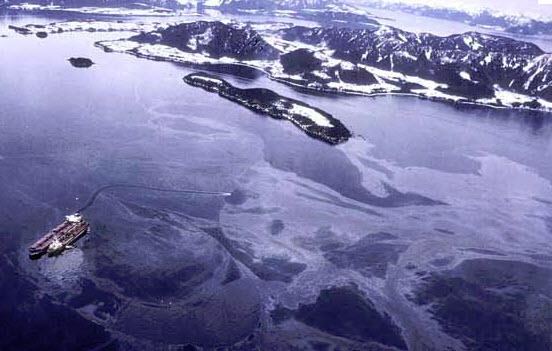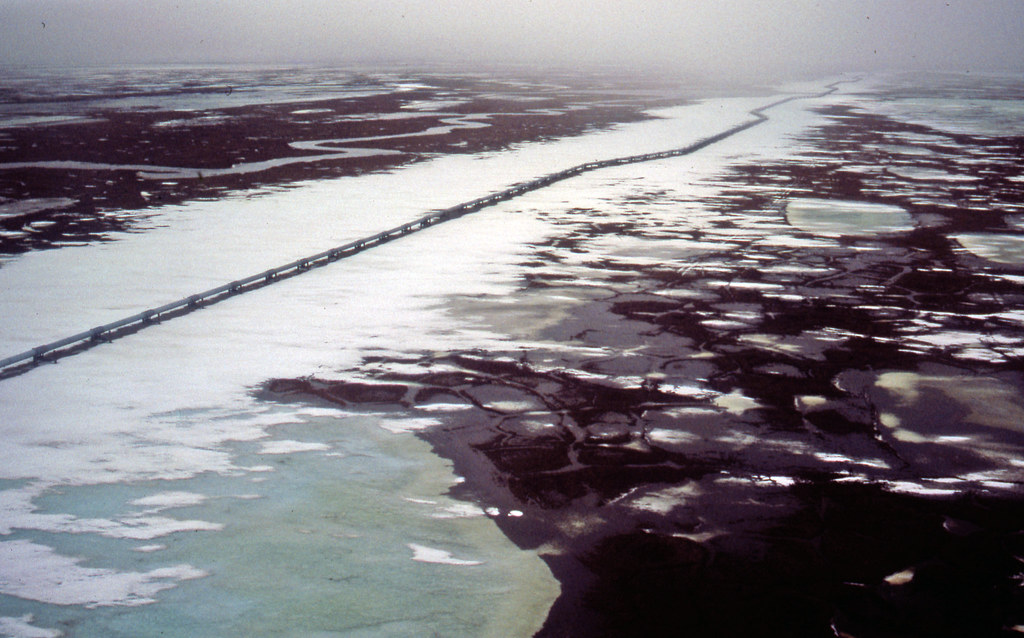
Problems
Environmental impact of Incident
The spill of March 2006, which went undetected for days, was the North Slope’s biggest oil spill on record. About 213,000 gallons leaked out of a corroded hole in the pipeline, according to state and federal environmental officials. The August spill was much smaller, but it triggered months of production shut-ins to allow for cleanup, repairs and replacement of the Prudhoe Bay transit-line system.
Toxicity of Prudhoe Bay Crude Oil to Alaskan Arctic Zooplankton
Bioassay experiments were conducted to determine the relative susceptibilities of three arctic Zooplankton species to oil pollution, and the results were compared with the effects of an actual oil spill on a pond near Barrow. In both the bioassay s and the pond, the addition of Prudhoe Bay crude oil was toxic to fairy shrimp (Branchionecta paladosa O. F. Müller), which seemed most sensitive, Daphnia middendorffiana Fischer, which was next most susceptible and Heterocope septentrionalis Juday and Muttkowski, which appeared somewhat resistant to the effects of oil. Cyclopoid copepods were the only common zooplankters able to survive the pond oil spill, and these were still present two and one half weeks after the spill. The rapid deaths of the other species, especially the branchiopods, suggest that Zooplankton may be the most susceptible of all arctic freshwater organisms to oil pollution. /// Biological analytical experiments were performed to determine the relative susceptibilities of three species of arctic zooplankton to oil pollution and the results were compared with the effects of a current oil spill on a pond near Barrow. In both cases, the addition of Prudhoe Bay crude oil was toxic to small shrimp (Branchionecta paladosa), which seemed the most sensitive, ahead of Daphnia Middendorffiana and Heterocope septentrionalis which appeared somewhat resistant to the effects of oil. Only the cyclopoid copepods, in the ordinary zooplankton, survived the oil spill in the pond, two and a half weeks after the spill. The rapid death of other species, especially branchiopods, suggests that zooplankton may be the most susceptible of all Arctic freshwater organisms to oil pollution.
Gallery
2Timelines
2011
November 29
Federal prosecutors will ask a judge to place BP on probation again, this time in connection to the Nov. 9, 2009, oil spill.
May 03
The federal government and BP announce a settlement in the federal civil case relating to the 2006 Prudhoe Bay spills. If approved by the court after a 30-day public comment period, BP will pay a $25 million fine and comply with detailed pipeline monitoring and safety requirements. Federal officials say it is the largest per-barrel fine ever levied in a U.S. oil spill.
2010
November 01
The federal probation officer supervising the criminal case stemming from the 2006 spills asks that BP's probation be revoked based on the company's behavior in the 2009 Lisburne pipeline rupture. A hearing is set for Sept. 6, 2011 in that case.
2009
November 09
An 18-inch flow line ruptures at BP's Lisburne field, spilling nearly 50,000 gallons of an oil and water mix onto the tundra about half a mile from Prudhoe Bay. Warnings, including sensors that showed drops in temperature and even alarms, began going off but BP operators failed to investigate or troubleshoot the cause of the alarms for months.
March 01
Both the state and federal governments file civil lawsuits against BP over the 2006 spills. The state case, which is still pending, aims to collect back taxes and fines as a result of revenue that was lost when the trans-Alaska pipeline was shutdown while the leaking lines were repaired. The federal case seeks penalties for violations of the Clean Water Act, the Clean Air Act and failure to comply with corrective action orders from the federal Pipeline and Hazardous Materials Safety Administration.
2007
November 29
BP is put on three years' criminal probation in connection with the 2006 oil spills. The probation settles a misdemeanor charge brought under the Clean Water Act.
2006
August 06
BP temporarily shuts down half of Prudhoe Bay after discovering another corroding, leaking pipeline. The company admits it has not used an electronic "pig" — a device that cleans and monitors the inside of pipelines — on the trunk line in years, even though some workers suspected sludge buildup and corrosion. In the aftermath, BP announces it will replace 16 miles of worn pipeline at an estimated cost of $170 million. In the following months, federal and state regulators launch investigations and congressional hearings are held.
March 02
A worker at Prudhoe Bay spots the frozen tundra drenched with some 20o,000 gallons of oil. Unbeknownst to BP, one of the company's transit pipelines had become corroded and was leaking for days, resulting in the biggest spill ever recorded in an Alaska oil field. A pipeline detection system failed to catch the leak.
